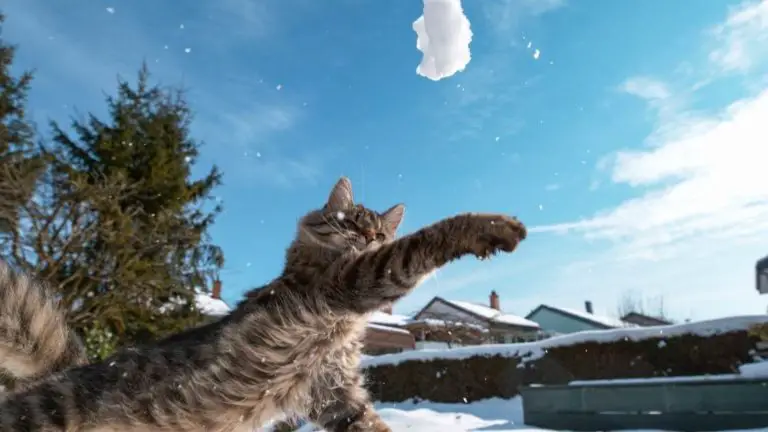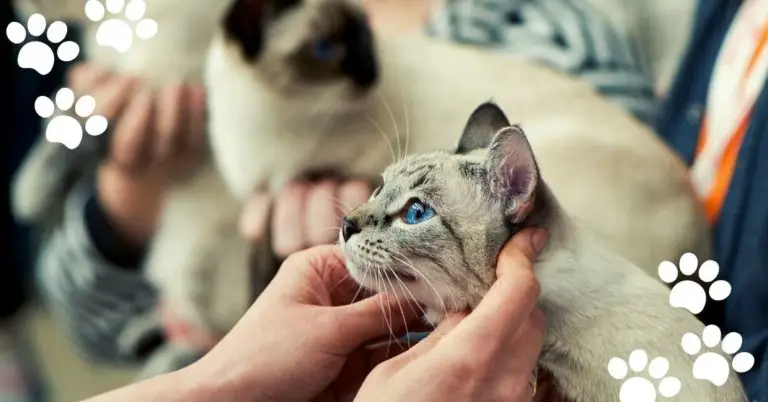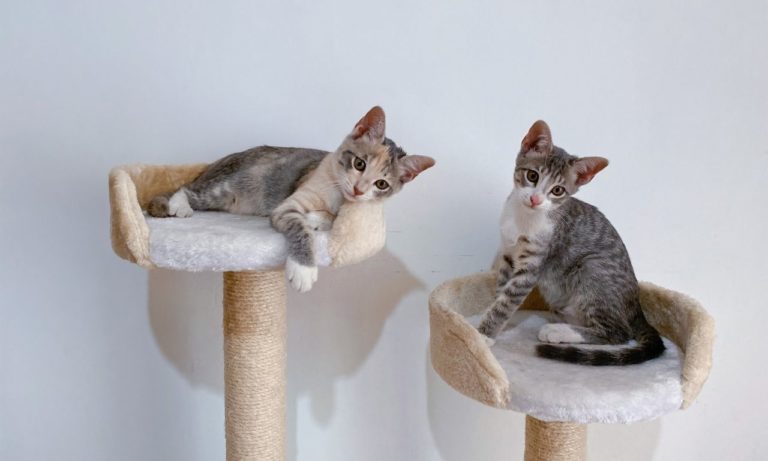How to Fix A Wobbly Cat Tree? (4 Simple Hacks!)
The best way to fix a wobbly cat tree is to use a piece of wood or metal to brace it against the wall. You can also use sandbags or bricks to weigh down the base of the tree. If the tree is still wobbling, you may need to add additional support.
To make your journey real quick and helpful here I’ll try to diagnose the problem first and later I’ll tell you the solution that will help you to fix a wobbly cat tree.
Diagnosing the Root Cause of the Wobbliness
I know it’s quite annoying when your cat keeps jumping on the tree and it wobbles each time. It might be due to different reasons and before fixing it, you must know the reason for its wobbly nature.
There are different causes of a wobbly cat tree and some of them are listed below.
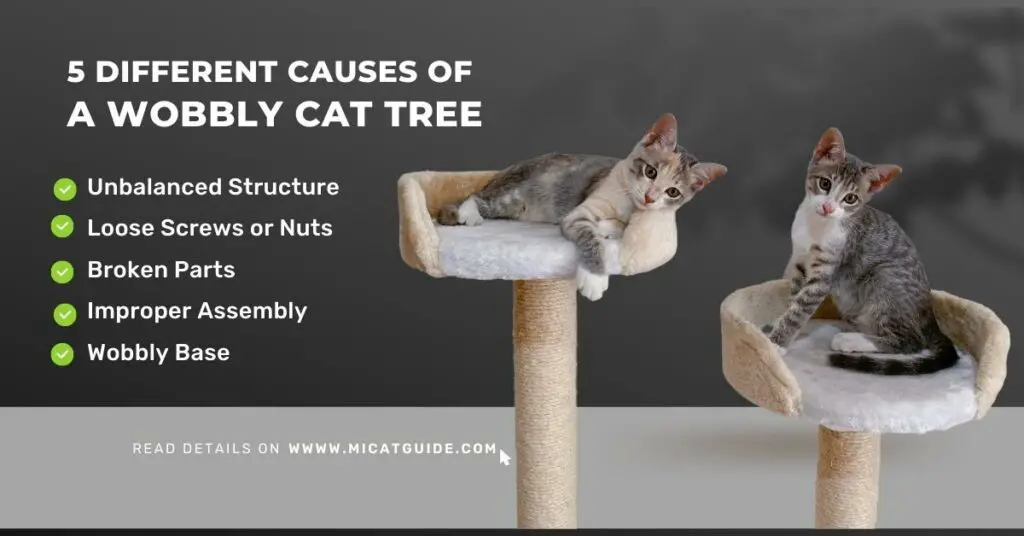
1. Unbalanced Structure
Yes, an unbalanced structure is the primary reason for a wobbling cat tower. If any of the posts or branches of the tree are not in the same plane, then it will wobble each time your cat uses it.
To fix this, you need to take a look at the structure of the tree and see if any of the posts or branches are not in the same plane. If they are not, then you need to adjust them so that they are.
2. Loose Screws or Nuts
Another reason for a wobbling cat tree is loose screws or nuts. If any of the screws or nuts that hold the posts or branches in place are loose, then the tree will wobble.
To fix this, you need to tighten all of the screws and nuts that hold the posts or branches in place.
3. Broken Parts
Believe me or not, but broken parts can also cause a wobbling cat tree. If any of the posts or branches are broken, then the tree will wobble.
If you’re thinking about fix a wobbly cat tree, first you need to make sure that all of the parts are in good condition and there are no broken parts.
4. Improper Assembly
Improper assembly is another reason for a wobbling cat tree. From my experience, I’ve seen that many people assemble the cat trees improperly and that’s why they wobble.
Make sure that all of the parts are in the correct position and that they are tightened properly. If you’re not sure about something, then you can always consult the instructions manual.
5. Wobbly Base
The last reason for a wobbling cat tree is a wobbly base. If the base of the tree is not stable, then the whole tree will wobble.
To fix this, you need to make sure that the base of the tree is stable. You can do this by adding weight to the base or by bracing it against a wall.
How to Fix A Cat Tree That’s Wobbling?
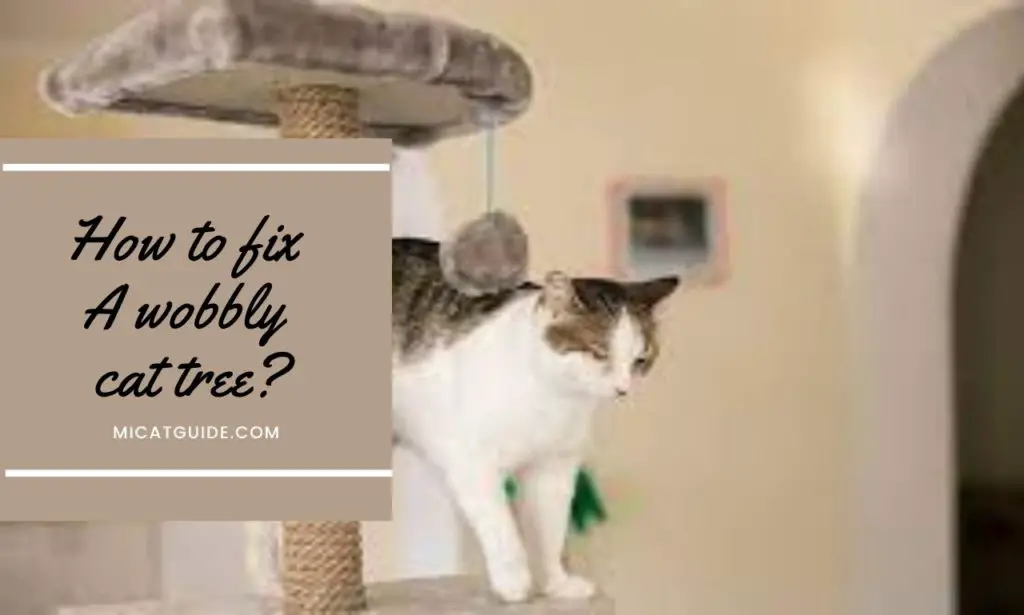
Once you’ve identified the source of the wobble, it’s time to fix it. There are several ways to secure your cat tree so it doesn’t wobble, so choose the method that works best for you.
First and foremost let’s start with the basics before we get ahead of ourselves and start buying things to try and repair our wobbly cat tree.
#1. Is Your Cat Tree on an Even Surface?

The first question you need to ask yourself is whether your cat tree is on an even surface or not. If it’s not, then this could be the root of the problem! A wobbly cat tree is often a result of an uneven surface.
If your cat tree isn’t stable because it’s on an uneven surface, the simplest solution is to move it to a new location where it will stand upright. You can also try putting a rubber mat or some other type of padding underneath the cat tree to create a more even surface.
#2. If Your Cat Tree is on an Even Surface But Still Wobbly
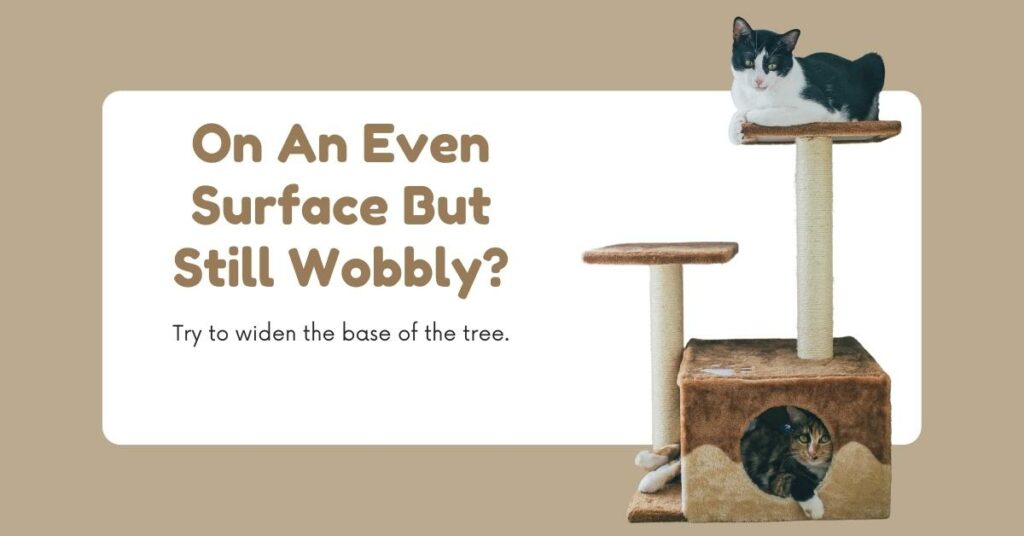
If your cat tree is standing on an even surface but it’s still wobbling, the next step is to try and widen the base of the tree. This can be done by adding some type of weight to the bottom of the tree.
There are a few different ways you can do this. One option is to use sandbags or weights to add more stability. You could also try using a large container filled with water or even bricks.
If your cat tree doesn’t have a base, you can create one out of cardboard or wood. Just make sure that it’s wide and stable enough to support the weight of your cat tree.
#3. Adding a Stabilizing Bar
If widening the base of your cat tree or adding weight doesn’t seem to be doing the trick, then you might need to get a little more creative. One option is to add a stabilizing bar.
This is a bar that goes from the top of the cat tree to the bottom and helps to keep it stable. You can buy a stabilizing bar or make your own using some PVC pipe or wood.
If you decide to make your own, make sure that it’s sturdy and will be able to support the weight of your cat tree.
#4. Reinforcing The Bottom of Your Cat Tree
If you’ve tried all of the above solutions and your cat tree is still wobbling, then it might be time to reinforce the bottom. This can be done by adding some type of bracing or metal support.
This isn’t a solution for everyone, as it does require a bit of knowledge and expertise. If you’re not confident in your ability to do this, then we recommend calling in a professional.
Best Ways to Secure Your Cat Tree So it Doesn’t Wobble
Here in this blog post I’ll be discussing 5 different ways that you can use to support your cat tree and make it more sturdy:
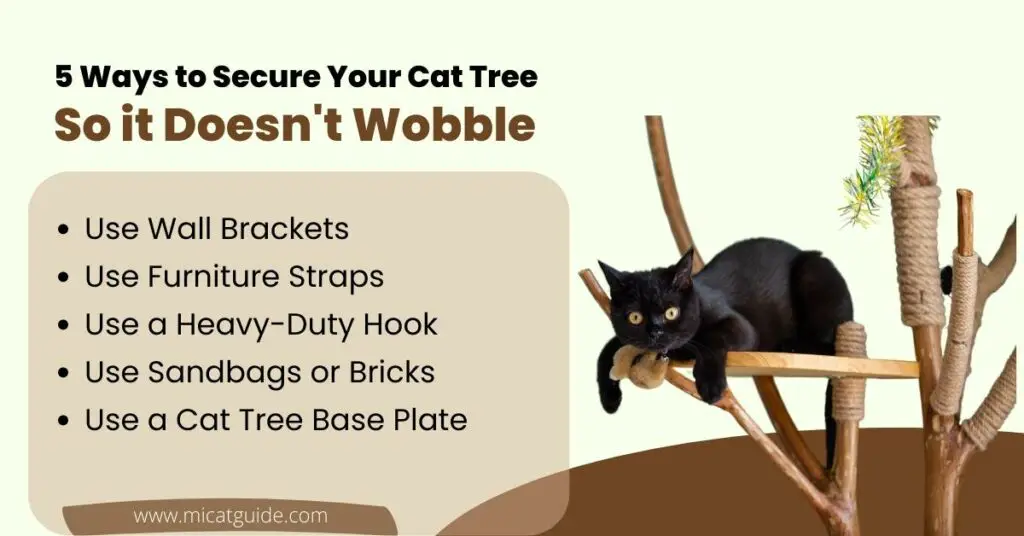
1. Use Wall Brackets
Wall brackets are L-shaped metal or plastic supports that you can screw into the wall and then attach your cat tree to. This is a very secure way to anchor your cat tree, but it does require drilling into your wall.
How to Do It?
Now that you know what kind of wall bracket to use, it’s time to learn how to install them. The process is actually quite simple:
- Start by finding studs in your wall using a stud finder.
- Once you’ve found the studs, mark where you want to place the brackets on the wall.
- Use a drill to make pilot holes at the marked locations.
- Now screw the brackets into the pilot holes.
- Finally, attach your cat tree to the brackets.
2. Use Furniture Straps
Another option for anchoring your cat tree is to use furniture straps. These are long, adjustable straps that you can loop around the cat tree and then screw into the wall. This is a less permanent solution than wall brackets, but it’s still quite effective.
How to Do It?
Installing furniture straps is a relatively simple process:
- Start by finding studs in your wall using a stud finder.
- Once you’ve found the studs, mark where you want to place the straps on the wall.
- Use a drill to make pilot holes at the marked locations.
- Now screw the straps into the pilot holes.
- Finally, loop the straps around the cat tree and secure them in place.
3. Use a Heavy-Duty Hook
If you don’t want to drill into your walls, another option is to use a heavy-duty hook. These hooks are designed to hold up to 50 pounds, so they’re more than strong enough to support a cat tree.
How to Do It?
Installing a heavy-duty hook is a relatively simple process:
- Start by finding studs in your wall using a stud finder.
- Once you’ve found the studs, mark where you want to place the hook on the wall.
- Use a drill to make a pilot hole at the marked location.
- Now screw the hook into the pilot hole.
- Finally, loop a strap or rope around the cat tree and attach it to the hook.
4. Use Sandbags or Bricks
If you don’t want to drill into your walls or use furniture straps, another option is to weigh down the base of the cat tree with sandbags or bricks. This will help to keep the cat tree from tipping over.
How to Do It?
To use sandbags or bricks to anchor your cat tree, simply place them on the floor around the base of the tree. You may need to experiment with different weights and locations to find the best setup.
5. Use a Cat Tree Base Plate
If you’re really serious about anchoring your cat tree, another option is to use a cat tree base plate. These plates are designed to be attached to the bottom of the cat tree and then bolted or screwed into the floor. This is the most permanent solution, but it’s also the most effective.
How to Do It?
Installing a cat tree base plate is a relatively simple process:
- Start by finding studs in your floor using a stud finder.
- Once you’ve found the studs, mark where you want to place the plate on the floor.
- Use a drill to make pilot holes at the marked locations.
- Now screw the plate into the pilot holes.
- Finally, attach your cat tree to the plate.
My Final Thoughts
A wobbly cat tree can be a serious safety hazard for your cat. If your cat tree is starting to tip over, it’s important to take action immediately. There are several different ways that you can anchor a cat tree, so choose the method that best suits your needs.
On the end of this post I must say that you should really consider carefully before deciding on which method to use to anchor your cat tree. Each method has its own advantages and disadvantages, so choose the one that will work best for you and your cat.

